
China has always attached great importance to the promotion of public awareness on intellectual property issues, and has been fostering an intellectual property cultural atmosphere featuring "respecting knowledge, appreciating innovation, honesty and law-biding" through various forms of efforts, such as top-level design of systems and policies, organization of specific activities and media publication, and school education.
1. Top-level Design
1.1 Instructions from State Leaders
President Xi Jinping has made important instructions on IP work at many occasions, identifying clear directions for IP publicity work. In July 2017, while chairing the 16th Meeting of the Central Leading Group on Financial and Economic Affairs, he pointed out that the enthusiasm and initiative of IP right holders (both natural person and legal person) shall be mobilized to promote property awareness, and conscientiously defense legitimate rights according to law.
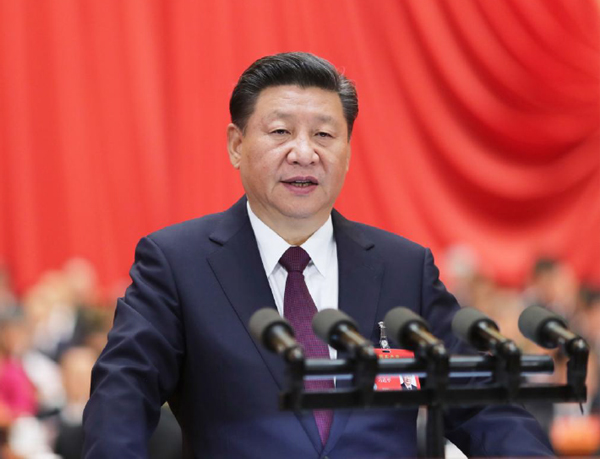
In October 2017, President Xi Jinping pointed out at the 19th National Congress of CPC that China will foster a culture of innovation, strengthen the creation, protection, and application of intellectual property, which is the guideline of IP development for China in the new era.
1.2 Policy Documents
In 2008, the State Council promulgated the Outline of National Intellectual Property Strategy, identifying the fostering of IP culture as one of the five strategic priorities, and raising the requirement to strengthen IP publicity and enhance IP awareness of the whole society. Outreach oriented IP education shall be carried out on an extensive basis. Add IP related contents in the initiatives to improve public ethical standards and the outreach campaigns of legal knowledge. Thus, foster an IP culture featuring "respecting knowledge, appreciating innovation, honesty and law-biding".
In recent years, China has promulgated a series of relevant policy documents, including: In 2013, the State Intellectual Property Office (CNIPA) and other 5 departments jointly promulgated the Opinions on Strengthening the Fostering of Intellectual Property Culture, pointing out that by 2020, the core concepts of IP culture shall become important contents of the spirit of time that the public generally accepts, and the IP culture development system shall become more scientific. As a result, the development of IP culture shall effectively support the implementation of national IP strategy and the construction of innovative country.
In 2014, the State Council promulgated the Action Plan on Further Implementing National IP Strategy (2014-2020), pointing out to include IP knowledge into school education courses, and establish demonstration schools on IP publicity and education. IP knowledge thus has been included into national legal outreach education and the promotion efforts of people's scientific knowledge.
In 2015, the State Council promulgated the Opinions on Accelerating the Building of IP Power under the New Situation, emphasizing to improve IP degree education, and enhance the training efforts of IP knowledge for various kinds of innovative talents. More efforts shall be made to foster IP culture, strengthen publicity, carry out outreach oriented IP education, and improve public service oriented publicity and consultation services, so as to enhance IP awareness of the whole society.
In 2016, the State Council promulgated the Planning of National IP Protection and Utilization during the 13th Five Plan Period, listing the Project of Fostering IP Culture as one of the nine major projects, requiring strengthening outreach education. Efforts shall be made to guide various schools to combine the development of IP culture with the development of students' ethical standard, the development of campus culture, as well as the organization of themed education activities, enhancing the IP awareness and innovation awareness of the students. Support the creation of IP outreach reading materials that enjoys both social and economic benefits, and promote the development of IP culture with Chinese characteristics.
2. Organization of Activities
2.1 National Intellectual Property Publicity Week
1) Basic information
In 2009, the State Intellectual Property Office (CNIPA), the Central Publicity Department, the State Administration of Industry and commerce, the State Copyright Office and other relevant departments jointly organized the first National IP Publicity Week activity. The Organizing Committee of the publicity week event sets up an office at SIPO, responsible for specific work during the event. Since 2009, the event has been organized each year for a week in late April around the World Intellectual Property Day.
The Organizing Committee now has 23 member units, including: the State intellectual Property Office, the Central Publicity Department (Information Office of the State Council), the Supreme People's Court, the Supreme People's Procuratorate, Ministry of Foreign Affairs, State Development and Reform Commission, Ministry of Education, Ministry of Science and Technology, Ministry of Industry and Information Technology, Ministry of Public Security, Ministry of Justice, Ministry of Agriculture, Ministry of Commerce, Ministry of Culture, Commission of Health and Family Planning, State-owned Assets Supervision and Administration Commission, General Administration of Customs, State Administration for Industry and Commerce, General Administration of Quality Supervision, State Administration of Press, Publication, Radio, Film and Television, State Forestry Administration, the Legislative Affairs Office of the State Council, and China Association for Science and Technology.
2) Annual themes in the past
2009: Culture, Strategy and Development
2010: Creation, Protection and Development
2011: Intellectual Property——boosting Economic Transition
2012: Foster IP Culture, Promote Social Innovative Development
2013: Implement IP Strategy, Support Innovation-driven Development
2014: Protection, Utilization and Development
2015: Build IP Powerhouse, Support Innovation-driven Development
2016: Strengthen IP Protection and Utilization, Speed up Building of IP Powerhouse
2017: Innovation & Creativity, Improving Lives. IP Writing Future
3) Focus of Publicity
The major focuses of the publicity are as follows: the development course of China's IP system since its creation, achievements and lessons; major decisions and actions of governments at various levels on strengthening IP protection, with key focuses on actions taken and outstanding achievements made by various departments in various regions on strengthening IP protection such as formulating laws and regulations, and combating infringement and counterfeit; national IP laws, regulations, and basic knowledge, with special focus on specialized knowledge of various kinds of IPs, bringing the outreach publicity to the level of publicizing IP culture featuring "respecting knowledge, appreciating innovation, honesty and law-biding", enhancing the IP awareness of the whole society.
4) Overview of the publicity week event in 2017
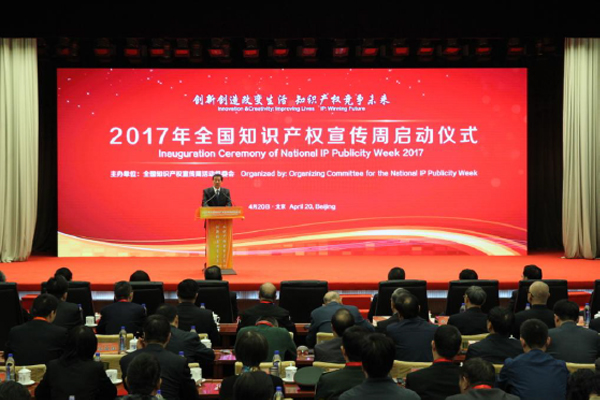
The National IP Publicity Week in 2017 has the following characteristics:
First of all, the standard of the event hit record high. State Councilor Wang Yong presented the inauguration ceremony and delivered important remarks. WIPO Director General Dr. Francis Gurry sent congratulation letter for the event, highly complimenting China's IP development. Secondly, innovations were made in the organization. CNIPA, the Supreme People's Court and the Ministry of Justice all joined hands with major traditional media such as CCTV and new media to introduce special programs, make live internet broadcast, and organize knowledge competitions. Thirdly, various social sectors voluntarily participate in the event. Many middle schools and primary schools have organized dedicated activities in the theme of "Campus IP Festival", such as exhibitions of achievements, open classes, speech competitions, and debate competitions. 10 major news agencies and websites including People's Daily News Agency and Xinhua News Agency jointly founded China News Media Copyright Protection Alliance. And Alibaba Group held IP protection Open Day event. And fourthly, more efforts were made on foreign targeted publicity. China Intellectual Property News and WIPO Beijing Office jointly organized High-level Forum on China IP Protection, inviting WIPO representatives, foreign government officials, IP attache of foreign embassies in China, and representatives of foreign enterprises to attend. The General Administration of Customs invited custom affairs attache, IP attache and commercial counselors of foreign embassies in China for dialogues and communications on custom IP protection and related issues.
According to incomplete statistics, during the publicity week, more than 10,000 relevant events and activities were organized nationally, with more than 100,000 direct participants. Around 10,000 pieces of news reports were made on IP, covering more than 100 million readers.
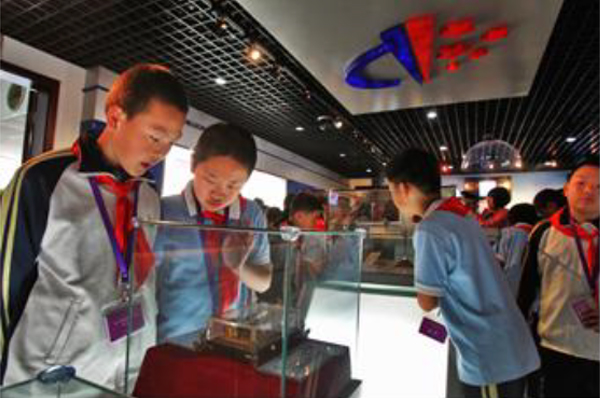
2.2 Soliciting Public Service Advertising Works
From 2013 to 2017, CNIPA has organized for four consecutive years the soliciting and review of IP public service advertising works, and received more than 1,000 advertising works. In 2017 alone, the State Administration of Press, Publication, Radio, Film and Television, and CNIPA jointly solicited IP related radio and TV public service advertising works, receiving more than 300 works delivered by media and enterprises around the country. Selected works were included into national radio and TV public service advertising works collection, to be broadcast by radio and TV stations as well as online media.
2.3 Poster design competitions
CNIPA has organized since 2013 three competitions on China IP Publicity Poster Design. In 2017, designers from 37 countries and regions including China, United States, UK, Canada, Italy and the Netherland joined the competition, with more than 2,300 participating units and 3,732 pieces of posters received. The award-winning posters will be used in 2018 IP publicity week event, as well as IP pilot and demonstration work.
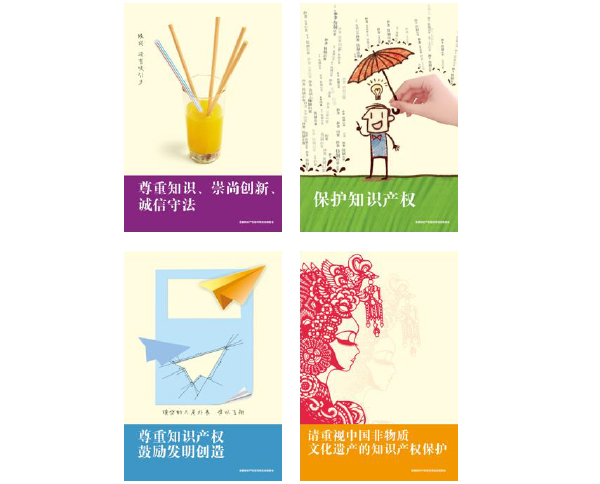
2.4 China Adolescents Science & Technology Innovation Contest
China Adolescents Science & Technology Innovation Contest was initiated in 1982. It's a national level science and technology contest for adolescents with extensive participation and broad attention, which is jointly organized by China Association of Science and Technology, Ministry of Education, Ministry of Science and Technology, National Development and Reform Commission, Ministry of Environment Protection, General Administration of Sport, and State Natural Science Funds Commission.
In 2017, more than 1,500 people were involved in the 32nd contest held in Hangzhou, with more than 500 adolescents, over 200 instructors, more than 130 experts and relevant teaching staff in the field of science and technology. These participants were from all 31 provinces (regions and municipalities), Xinjiang Production and Construction Corps, Hongkong and Macau Special Administrative Regions, as well as other 20 more countries and regions. As the organizer of the event, CNIPA fully took advantage of the opportunity to bring in-depth integration of the contest and IP through setting up consultation service desks, organizing public service workshops, and organizing relevant exhibitions.
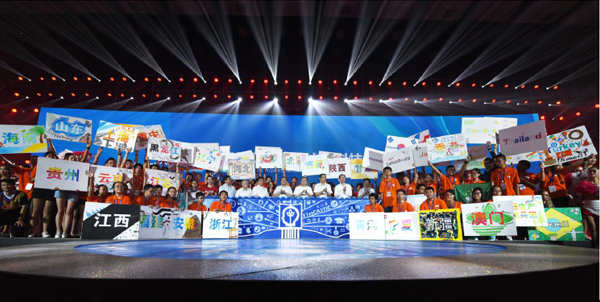
3. Media Publication
3.1 Information Release System
In 2016, CNIPA formulated the Interim Regulation on Routine Information Release, which stipulated about the combination of regular information release and random information release. CNIPA carries out information release work based on the "4+2+1+n" format. Each year, CNIPA organizes around 5 to 10 press conferences on the key work of the Office, with 30 to 50 media participating on average. In 2017, CNIPA organized 5 press conferences, including two at the Information Office of the State Council on the 13th Five Year Planning of National IP Protection and Utilization, and on IP development situation in China in 2016, respectively.
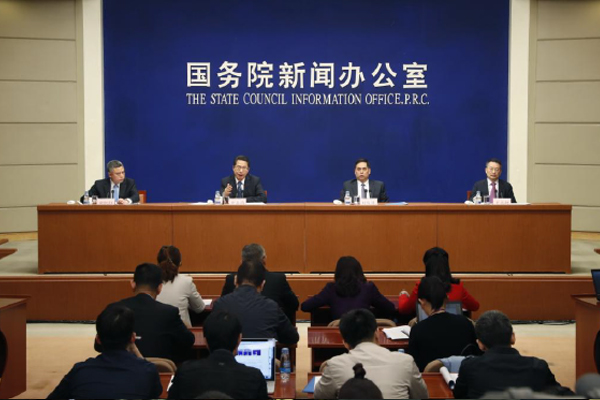
3.2 Publicity Platform and Medium
1) Government Website
The government website of CNIPA was officially launched in 1999. It's now a group of websites including that of CNIPA and of 47 local IP administrations. It's a platform for information publication, policy interpretation, publicity and trainings. It has three versions, namely simplified Chinese, traditional Chinese and English, with more than 1,500,000 average daily hits.
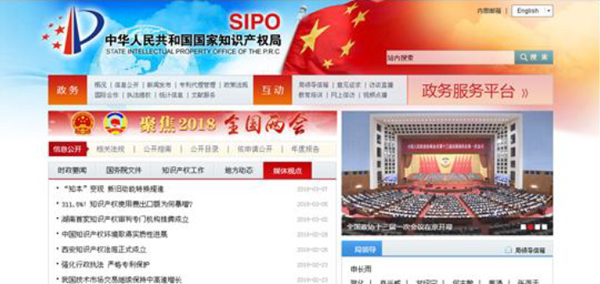
In order to strengthen regional multi-lateral cooperation, CNIPA also has opened or will open several relevant websites, including: the China-Japan-South Korea Trilateral IP Cooperation website launched in November 2013, providing services to the public on the development of IP cooperation among China, Japan and South Korea, law information and searches of patent information; the IP BRICS Website in construction jointly with IP authorities of BRICS countries, which will be launched during the 10th Meeting of Heads of BRICS IP Offices in 2018; and the Belt and Road IP cooperation website in construction for strengthening IP cooperation among BRI participating countries, which will be launched during the Belt and Road High-level Conference on IP Cooperation in 2018.
2) Official WeChat Account
CNIPA official Wechat account was launched in 2015. Since then, it has fully played the advantages of being authoritative, fast in spread and wide in coverage, delivering four pieces of information every working day, making it a major official channel to spread IP information to the public and foster public IP awareness. In 2017, CNIPA has forwarded altogether 1,007 pieces of information in 254 issues, and received more than 2,080,000 visits. It now has around 78,800 subscribed followers.
3) China Intellectual Property News
China Intellectual Property News started publication in 1989 with two issues every week. It's the main front of IP related information and one of the major resources of China's original IP information. This newspaper has several pages, including that of important news, of comprehensive news, and of local news. It also publishes Patent Weekly, Trademark Weekly, Copyright Weekly, and Bi-lingual Weekly. In 2017, China Intellectual Property News was awarded "Top One Hundred Newspapers in China".
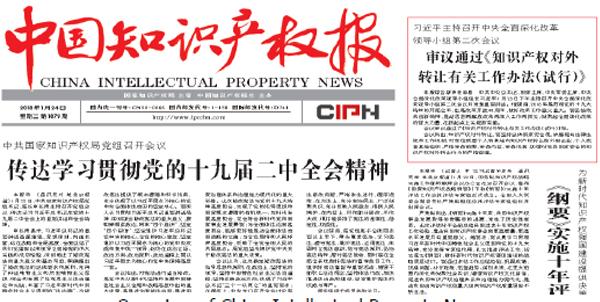
4) Magazines
CNIPA is in charge of four magazines, including: Intellectual Property (bimonthly) published by China Intellectual Property Society, Creativity (monthly) published by China Intellectual Property News Agency, China Invention & Patent (monthly) published by Intellectual Property Publishing House, and Patent Agency (quarterly) published by All-China Patent Attorneys Association.

5) Books
In order to support the promotion of public IP awareness and the IP outreach education in primary and middle schools, CNIPA organized or commissioned relevant units edit and published a large batch of specialized IP books. From 2013 to 2017, China Intellectual Property Publishing House published more than 700 kinds of books including The Collection of Zheng Chengsi's Intellectual Property Essays. In 2017, CNIPA commissioned Intellectual Property Publishing House edit National Intellectual Property Education Demonstration Textbooks for Primary and Middle School Students and series of novels and cartoons on I Can Invent. Two novels are now finished writing with one published already.
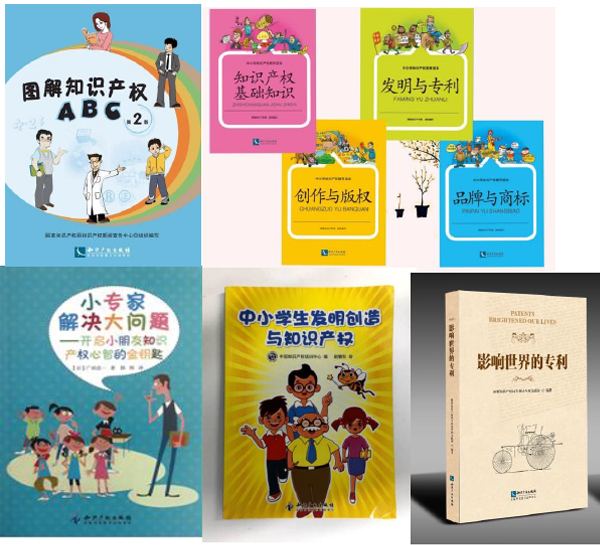
6) Publicity Videos
CNIPA makes official publicity videos every year during the 4.26 event, introducing to the public latest IP development in China. In 2016, CNIPA supported Hunan Provincial Intellectual Property Office in making the first IP specialized documentary in China ——Intellectual Property: Sharp Weapons of the Country. The documentary has been played by many TV stations including Hunan TV Station, Golden Eagle Documentary, Shanghai Documentary, Beijing Documentary and Guangdong News Channel, arousing broad attention from the public on intellectual Property. CNIPA also invited well-known public figures to make IP culture publicity videos, which have been broadcasted on major media like People.cn and Xinhuanet.
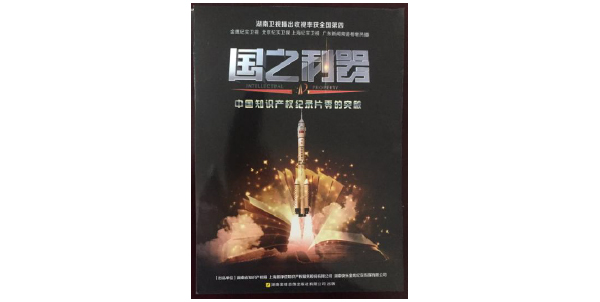
3.3 Cooperation with News Media
Since 2004, CNIPA has been publishing Intellectual Property Weekly in cooperation with China Daily, making every week a report on IP in China. CNIPA has also set up an intellectual property channel in cooperation with People.cn since 2009. Besides, in order to further strengthen communication with media, CNIPA organizes media training seminars on IP every year, introducing to the media outlines of annual IP publicity work and interpreting relevant policy documents.
4. Education and Training
4.1 National Primary and Middle School IP Education Pilot and Demonstration Work
In order to fully play the radiation and driving effects of IP education in primary and middle schools, create the situation of " educate one student, influence a whole family and mobilize the whole society", so as to enhance the IP awareness of the whole society, CNIPA and Ministry of Education jointly carried out national primary and middle school IP education pilot and demonstration work in 2015. The plan is to establish 100 national IP education demonstration schools and 1,000 provincial IP education demonstration schools by 2020. CNIPA provides support to these pilots and demonstration schools in financial and teaching resources, and also publicizes extensively the successful practices and experience through news media.
By the end of 2017, CNIPA and Ministry of Education have jointly evaluated and approved 112 pilot schools at national level in three batches. 18 provinces have started relevant work already, and have evaluated and approved more than 870 provincial level pilot and demonstration schools.
4.2 IP Education in Colleges and Universities
Colleges and universities are major platforms for IP education in China. For specialized IP education, a professional and comprehensive training pattern has been established. Students at undergraduate stage can choose from studying IP knowledge as major course, minor course or for double degrees; while at graduate stage, students can choose from law major, management major or MBA. Currently, 61 colleges and universities have set up IP Law major for bachelor degree. Besides, some college and universities also provide open selective courses on IP, organize experts to deliver series of dedicated lectures on hot-spot IP issues, thus help students of non IP majors know more about IP knowledge.
4.3 Construction of Training Bases
Since 2009, CNIPA has joined hands with domestic universities and research institutes in setting up 26 national IP training bases. By the end of 2017, these training bases have already organized more than 1100 terms of training facing trainees from government departments, enterprise and research institutes, and trained more than 90,000 trainees. In 2017 alone, these training bases organized 240 terms of training, with more than 19,000 trainees.
4.4 Development of Long-distance Education
CNIPA started the construction of China IP Long-distance Education Platform in 2002, aiming to make this platform a professional and systematic long distance IP education service platform for the whole society.
In 2016, WIPO Academy authorized China IP Training Center the global management work of its Chinese language long distance education courses. With the in-depth integration of China's existing platform and WIPO Academy platform, China IP Long-distance Education Platform has become a sub-platform of WIPO Academy.
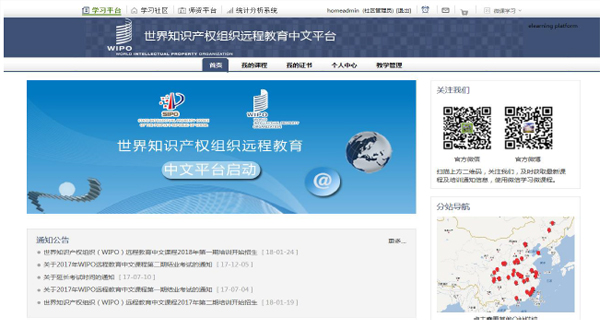
By 2017, a system of courses with courses at preliminary, middle and senior levels and on specific topics has been established at the Platform, with 257 online courses already provided. The Platform also has 15 provincial sub platforms and 160 local IP long distance education stations nationally. As a result, a modern long distance education and training network with a nationwide coverage has been established. Long distance education has provided trainings to an accumulative number of 635,000 trainees, with the overall scale of training breaking 3,300,000 person/times.
4.5 Public Lectures
CNIPA started to organize public lectures from 2006. These public lectures are series of free lectures interpreting patent legal and policy documents to the public and publicizing patent knowledge. The public lecture is organized every Friday regularly, with extra lectures organized at intervals from Monday to Thursday. Online live broadcast has been opened. People can watch live broadcast of lectures on computer and mobile phone terminals. By the end of 2017, CNIPA has organized a total of 525 public lectures, with more than 59,000 participants attending the lectures on site or through online terminals. More than 280 foreign participants from 15 countries and regions including the United States, Germany, Japan, South Korea, and Australia have attended the online lectures.
 login
login